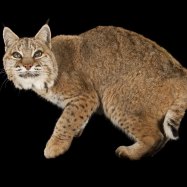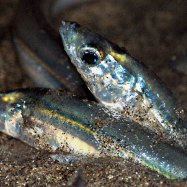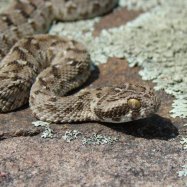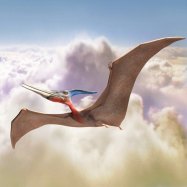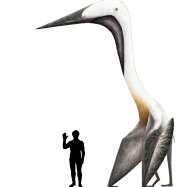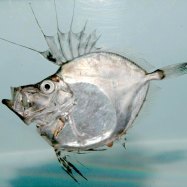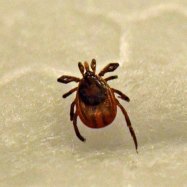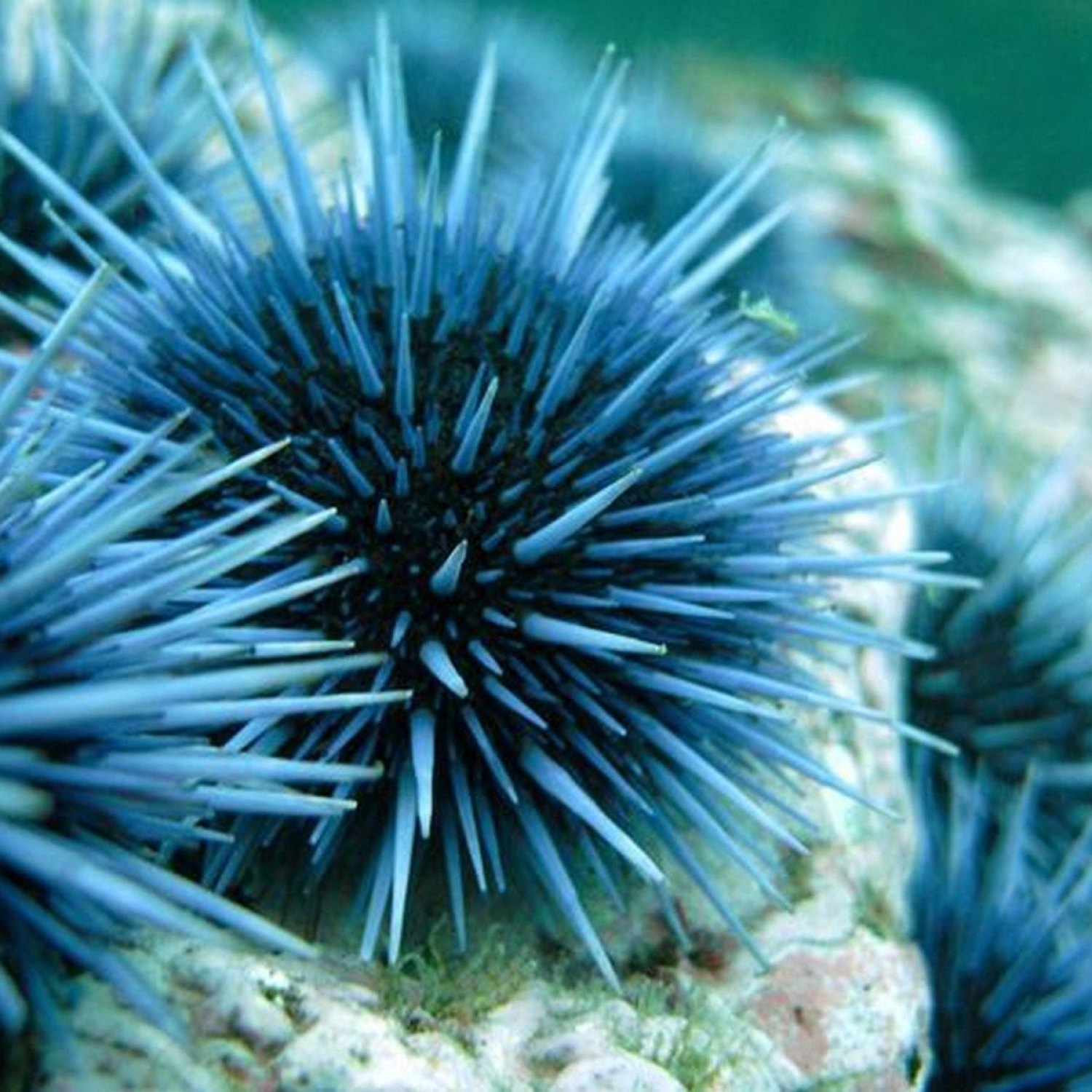
Sea Urchin
Varies depending on species
Sea urchins, a group of various species found in oceans, have a unique body shape that can be either globular or flattened. The length of this fascinating creature can vary depending on its species. With their spiny exterior, sea urchins play an essential role in maintaining the balance of marine ecosystems. #SeaUrchin #MarineLife #Oceans #Ecosystem #AnimalFacts
Animal Details Summary:
Common Name: Sea Urchin
Kingdom: Animalia
Habitat: Marine
Exploring the Fascinating World of Sea Urchins
When we think of marine animals, images of graceful dolphins, majestic whales, and colorful fish often come to mind. However, there is one creature that is often overlooked but is just as intriguing – the sea urchin. These spiny, round creatures are found in oceans worldwide and belong to the class Echinoidea, in the phylum Echinodermata. With their unique appearance and integral role in the marine ecosystem, sea urchins are truly remarkable creatures Sea Urchin. In this article, we will dive deep into the world of sea urchins and explore their fascinating features and behavior.The Basics: Classification and Distribution
Sea urchins belong to the animal kingdom, known as Animalia. Within the kingdom, they are classified in the phylum Echinodermata, which translates to "spiny skin" in Greek. This phylum also includes other familiar creatures such as starfish, sand dollars, and sea cucumbers. The class Echinoidea, which consists of over 950 species, is further divided into two subclasses – Euechinoidea and Cidaroidea. The Euechinoidea subclass includes the typical, globular-shaped sea urchins, while the Cidaroidea subclass includes the more flattened, disk-shaped sea urchins.Sea urchins are found in all major oceans, from the shallow coastal waters to the deep sea. They can be found as deep as 6,000 meters in the ocean. While they are most commonly found in tropical and temperate regions, some species also thrive in polar waters Shichi. The diversity of habitats that sea urchins can survive in is a testament to their adaptability and resilience as a species.
Physical Appearance and Coloration
Sea urchins are known for their spiny exterior, which acts as a protective barrier from predators. The length of their spines can vary from a few centimeters to up to 30 centimeters, depending on the species. These spines are not only used as a defense mechanism but also help the sea urchin in movement and feeding. The spines are connected to ball-and-socket joints, allowing them to move in all directions and navigate through their environment.While most sea urchins have a globular shape, some species have a more flattened appearance, such as the sand dollar. The flattened sea urchins have evolved to burrow in sandy or muddy bottoms, and their flattened shape makes it easier for them to move and dig.
A remarkable fact about sea urchins is that their coloration can vary greatly from species to species. Some are brightly colored, while others are more muted. The coloration also depends on the habitat of the sea urchin, with those in shallow waters tending to be more vibrant to blend in with their surroundings. However, despite the differences in color, all sea urchins have a beautiful symmetry in their patterns and shapes, making them truly unique creatures to observe.
Feeding and Habitat
Sea urchins are primarily herbivores, although some species may also feed on small crustaceans or carrion. They have a specialized feeding structure called Aristotle's lantern, which is a set of powerful jaws and teeth located on the underside of their body. The teeth are used to scrape and graze on algae, kelp, and other marine vegetation. The constant movement of their spines also helps to remove debris and keep their feeding structures clean.Sea urchins play a vital role in the marine ecosystem, as their feeding habits help maintain a balance in the underwater environment. They are also essential for the health of coral reefs, as they help control the growth of algae, preventing it from overrunning and suffocating the corals.
In terms of habitat, sea urchins can be found in a variety of environments, including rocky shores, coral reefs, seagrass beds, and even sandy or muddy bottoms. Some species live in groups, while others prefer to live in solitude. They are mainly nocturnal creatures, and their feeding habits are often influenced by the tides and currents of their habitat.
Unique Adaptations and Behaviors
Sea urchins have several unique adaptations that allow them to thrive in their ocean habitat. One of the most fascinating features is their tube feet, which are found on the underside of their body and are used for movement. These tube feet are also used to help them attach to surfaces, and in some species, they can even release a sticky substance to help them cling on to objects.Another remarkable adaptation of sea urchins is their ability to regenerate lost spines. Just like starfish, sea urchins have impressive regenerative abilities, which help them survive in the wild and heal from any injuries.
In terms of their behavior, sea urchins are generally solitary creatures, although some species may form groups for protection or mating. They are not known for their intelligence, but they have basic instincts that allow them to sense danger and respond accordingly. They also have the ability to release their gametes into the water for external fertilization, and some species have even been known to show signs of parental care.
Captivating Curiosities
While we have covered the fundamental aspects of sea urchins, there are some curious facts about these creatures that are worth mentioning:- Despite their spiny exterior, some species of sea urchins are used as food in many countries, particularly in Japan and parts of Asia.
- In some cultures, sea urchins are considered aphrodisiacs and are believed to have medicinal properties.
- The sea urchin's closest relative is the sand dollar, which has a similar flattened shape but is more closely related to the sea cucumber.
- Sea urchins have been around for over 450 million years, making them one of the oldest creatures on Earth.
The Impact of Human Activity
Unfortunately, like many other marine animals, sea urchins are facing threats due to human activities. Overfishing, ocean pollution, and climate change have all contributed to the decline of sea urchin populations worldwide. In particular, overfishing has led to a decrease in their predators, such as triggerfish and sea otters, resulting in an exponential increase in sea urchin populations. This, in turn, has caused severe damage to coral reefs and other marine environments, as the sea urchins overgraze on vegetation, leaving behind barren areas.In Conclusion
The sea urchin may not be the most well-known or glamorous marine animal, but it is undoubtedly a fascinating creature with a vital role to play in our oceans. Its unique adaptations, beautiful color variations, and important role in the marine ecosystem make it a truly remarkable species. As we continue to explore the wonders of the ocean, let us not forget to appreciate and protect these small but mighty creatures – the sea urchins.

Sea Urchin
Animal Details Sea Urchin - Scientific Name: Echinoidea
- Category: Animals S
- Scientific Name: Echinoidea
- Common Name: Sea Urchin
- Kingdom: Animalia
- Phylum: Echinodermata
- Class: Echinoidea
- Order: Echinoida
- Family: Various
- Habitat: Marine
- Feeding Method: Herbivore
- Geographical Distribution: Global
- Country of Origin: N/A
- Location: Oceans
- Animal Coloration: Varies depending on species
- Body Shape: Globular or flattened
- Length: Varies depending on species
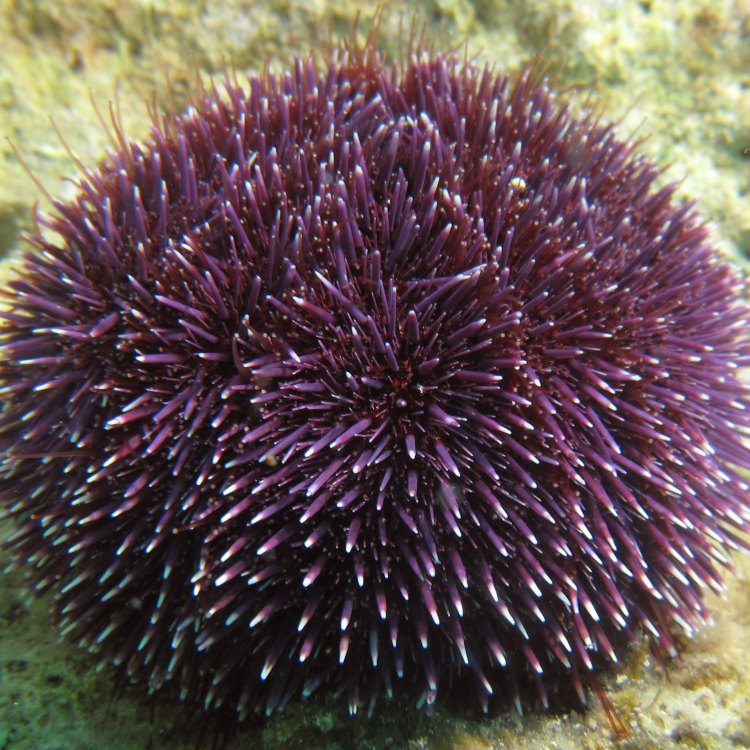
Sea Urchin
- Adult Size: 0.2 inches to 12 inches
- Average Lifespan: Up to 30 years
- Reproduction: Sexual
- Reproductive Behavior: External fertilization
- Sound or Call: N/A
- Migration Pattern: Non-migratory
- Social Groups: Solitary
- Behavior: Slow-moving
- Threats: Overfishing, pollution, habitat destruction
- Conservation Status: Not evaluated
- Impact on Ecosystem: Important for maintaining balance in marine ecosystems
- Human Use: Food, research, aquarium trade
- Distinctive Features: Spiny exoskeleton, tube feet
- Interesting Facts: Some sea urchins have venomous spines. Sea urchins play a role in reef formation. They have a unique feeding structure called Aristotle's Lantern.
- Predator: Otters, fish, birds, crabs
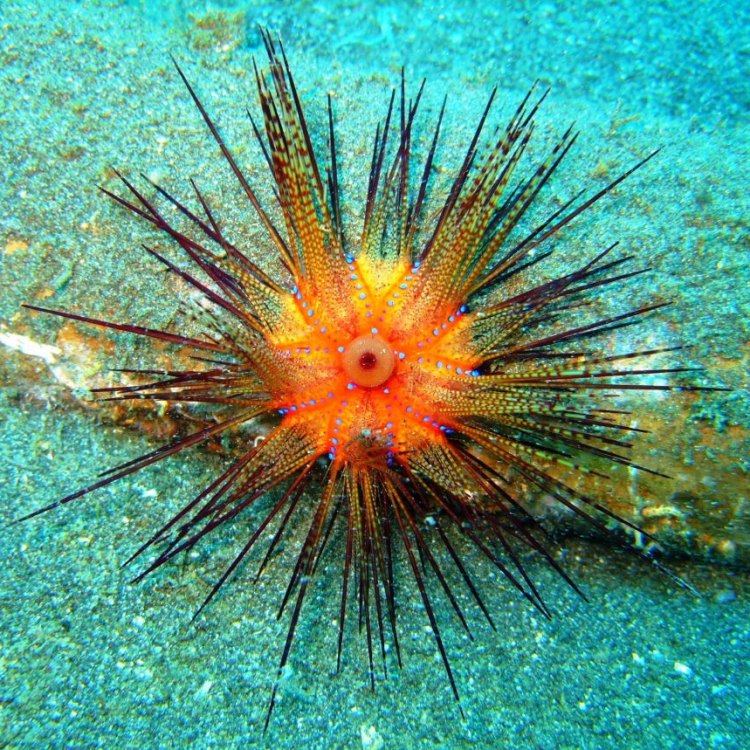
Echinoidea
The Fascinating Sea Urchin: A Slow-Moving Yet Important Creature of the Sea
From the vibrant coral reefs to the deep abyss of the ocean, the sea is home to a plethora of fascinating creatures. Among them, the sea urchin stands out for its distinctive spiny appearance and important role in maintaining balance in marine ecosystems. These slow-moving creatures may not catch our eye at first glance, but upon closer inspection, they prove to be an essential part of the intricate web of life in the ocean.With an adult size ranging from 0 PeaceOfAnimals.Com.2 inches to 12 inches, sea urchins vary in size depending on their species. Some species are tiny and can hide within the crevices of rocks, while others can grow to be as large as a basketball. These creatures have an impressive lifespan, with some species living up to 30 years. This makes them one of the longest living invertebrates in the ocean.
Sea urchins are found in all of the world's oceans, from shallow waters to depths of over 6,000 feet. They belong to the phylum Echinodermata, which also includes sea stars, sand dollars, and sea cucumbers. Like their relatives, sea urchins have a unique feature – a spiny exoskeleton made of calcium carbonate. These spines not only protect them from predators but also play a role in their movement. By using their tube feet, sea urchins can carefully maneuver and navigate through the rocky ocean floor Sulcata Tortoise.
One of the most interesting aspects of sea urchins is their reproductive behavior. They reproduce through external fertilization, meaning that the male releases sperm into the water, and the female eggs get fertilized externally. This process usually occurs during spawning season, where female sea urchins release up to millions of eggs into the water. The fertilized eggs then develop into larvae, which eventually settle on the ocean floor and grow into adult sea urchins.
It's fascinating to note that sea urchins do not produce any sounds or calls, making them one of the few silent creatures in the sea. However, this doesn't mean they go unnoticed. These creatures play an important role in reef formation, as they feed on algae that can damage coral. By keeping the algae population in check, sea urchins help maintain the health of coral reefs, known as the "rainforests of the ocean."
One might think that sea urchins would need to migrate to find food or suitable conditions, but this is not the case. These creatures are non-migratory and prefer to stay in one area throughout their lives. They are solitary creatures, meaning they don't form social groups, and can often be found alone or in small groups of their own species.
Sea urchins have a slow-moving behavior, which is mostly due to their feeding process. They use their unique feeding structure called Aristotle's lantern, consisting of five strong and sharp teeth, to scrape algae and other small organisms off rocks and surfaces. This process can take up to 24 hours, and after a good meal, sea urchins can go for weeks without having to feed again.
Humans have been intertwined with sea urchins for centuries, mainly for food and research purposes. Sea urchins are considered a delicacy in some cultures, with their roe, also known as uni, being a popular delicacy in sushi and other dishes. Additionally, scientists use sea urchins in their research studies to understand various biological processes, such as fertilization, development, and immunity. Unfortunately, this has also led to overfishing, with some species facing population decline due to excessive harvesting.
But this is not the only threat to sea urchins. Pollution and habitat destruction also pose a significant risk to their survival. As sea urchins play a crucial role in maintaining balance in marine ecosystems, their decline can have a cascading effect on the whole ecosystem. For instance, an overabundance of algae, due to the decline of sea urchins, can smother coral and other plants, leading to damage to the reef and ultimately affecting the entire ecosystem.
Despite their importance, sea urchins are not evaluated for their conservation status, although some species are facing population decline. This highlights the need for further research and conservation efforts to protect these important creatures and their habitat.
One may not think of sea urchins as predators, but they do have some natural enemies. Sea otters, crabs, and some fish species, such as the triggerfish, are known to feed on sea urchins. However, these animals are also facing their own threats, such as pollution and overfishing, which ultimately impacts the balance of the whole ecosystem.
In addition to their distinctive appearance and important role in the ecosystem, sea urchins also have some interesting facts that make them stand out among other sea creatures. Some sea urchins have venomous spines, which can cause painful stings to predators or unsuspecting humans. However, not all sea urchins have venomous spines, and the ones that do use it mainly for defense.
In conclusion, the sea urchin may not be the fastest or most active creature in the sea, but their importance in marine ecosystems cannot be underestimated. From their distinct appearance to their slow-moving behavior and unique feeding structure, these creatures have adapted to survive in the beautiful yet challenging environment of the ocean. However, as with many other marine species, human activities pose a significant threat to their survival. It's essential to understand the delicate balance of the ocean and work towards sustainable practices to protect sea urchins and their habitat for future generations to appreciate and admire.
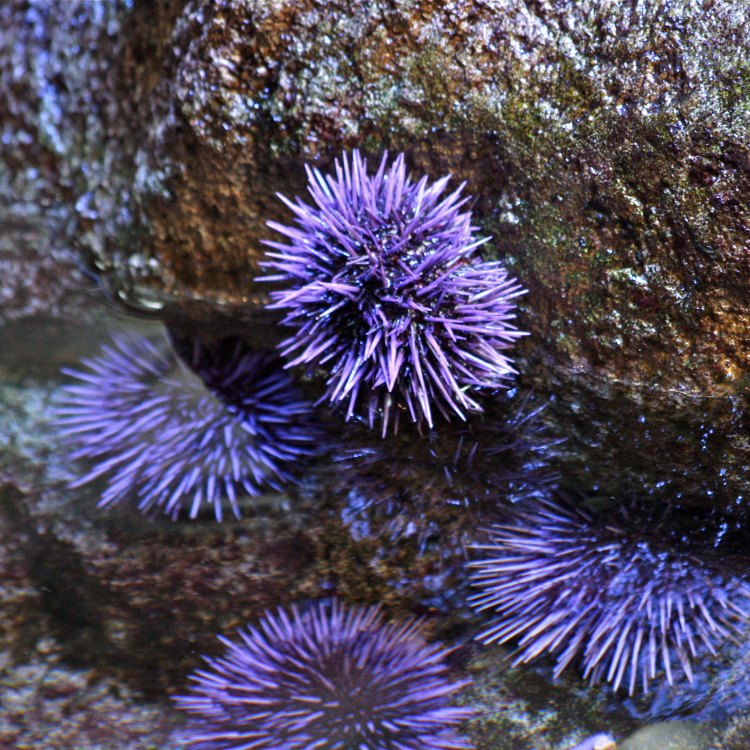
Exploring the Fascinating World of Sea Urchins
Disclaimer: The content provided is for informational purposes only. We cannot guarantee the accuracy of the information on this page 100%. All information provided here may change without prior notice.

